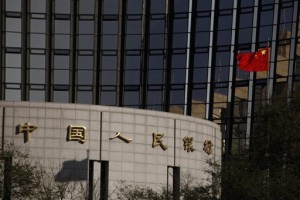Creeping up on the outer edges of Wall Street soothsayers’ economic crystal ball, until now dominated by American and Euro crises, is growing concern about China.
The inane idea China [and India, which is also in trouble] would somehow rescue the world economy is now, finally, dismissed by the pundits — without apologies. How a largely export-led, mercantilist economy was to save the world with its principle markets in the U.S. and the EU winnowing down was never explained. Continued wishful references to Chinese leadership’s equally improbable promises to boost domestic consumption are also falling away.

There is, in fact, a growing consensus the Chinese economy is spiraling down. One respected Hong Kong economist, Ms. Wang Tao of UBS, is predicting a gross domestic growth [GDP] rate toward 7 percent before year’s end. That’s below the red line 8 percent long considered by the double-domes as the minimum to satisfy jobs for China’s growing population.
Soon we can hope to hear an end to those straight-line projections — so wrong two decades ago in Japan predictions — which take China’s current world No. 2 GDP to soaring heights. Indeed, China is the classic example of inadequacies of GDP as an economic barometer. Even assuming official figures are reliable — which is a far stretch — China’s GDP has inflated with vast over expansion of infrastructure and massive corruption indicating enormous activity but not necessarily a basis for continued stability and growth. [Remember Euroland’s GDP/consumption figures before the fall!] Nor do we have more than a notional figure for huge military outlays.
Granted, some of us who have been predicting a China crash for years, arguing its miraculous transformation was jerrybuilt. But we have always said what would trip the fall, when, and how the Chinese would cope with it, is unpredictable — as so many things in life. Some full-time observers are now turning to the banking structure as chief concern. Whether you look at inadequacies of Communist Party decision makers in their see-saw battle to maintain maximum growth but head off any hint of inflation, a traditional Chinese destroyer of dynasties, the outlook is grim.
Larry Lang, a Hong Kong TV personality and Chinese University professor of finance, recently labeled provincial finances as “China’s many Greeces”. Beijing’s writ — as an old proverb goes — ends no longer at the village gate but increasingly at the provincial capital where regional authorities defy the center, desperate to meet growing resources demands.
Local politicos have wheedled, persuaded, bribed and threatened local government banks into credit far beyond their capacity to repay. Add that to the huge stock of non-performing loans banks give their Party buddies in the huge inefficient government companies and you have what could be the mother of all financial fiascos.
Just as politics does not end at the banks’ doors, the Communist Party is moving into a generational leadership succession year. In theory, the new president and prime minister have been anointed. But there is a lot of shin-kicking with the usual Communist turn to so-called ideological arguments masking personality, regional and purely economic interests.
A kind of neo-Maoism has surfaced. And it could take on new life as economic problems deepen because there has always been a strong Party constituency for preserving Soviet controls, planning and government ownership. Never mind that the fabled Chinese entrepreneurial spirit has taken hold with the partial liberalization of the past two decades. But much of this private sector with its disproportionately higher productivity was exports now hit hard with the downturn in the U.S. and Europe.
This has collapsed thousands of private businesses, particularly in South China’s clothing and gizmo assembly operations, leading to dramatic literal disappearances of owners and managers and growing unemployment. This, in turn, has fed already escalating unrest; Beijing has stopped reporting even the very suspect official figures.
It’s early on, of course, to predict this would develop into the kind of provincial disintegration bringing down virtually every China ruling dynasty through its long history. Still….
Meanwhile, China’s drop in demand for raw materials is already hitting world commodity markets — iron ore, for example, and soon to be coal and soya. That will have its effects on the overseas suppliers from Angola to Brazil to Australia [which has already seen a 10 percent drop in its high-flying dollar of a few weeks ago.]
Sol W. Sanders, (solsanders@cox.net), writes the ‘Follow the Money’ column for The Washington Times on the convergence of international politics, business and economics. He is also a contributing editor for WorldTribune.com and East-Asia-Intel.com.

